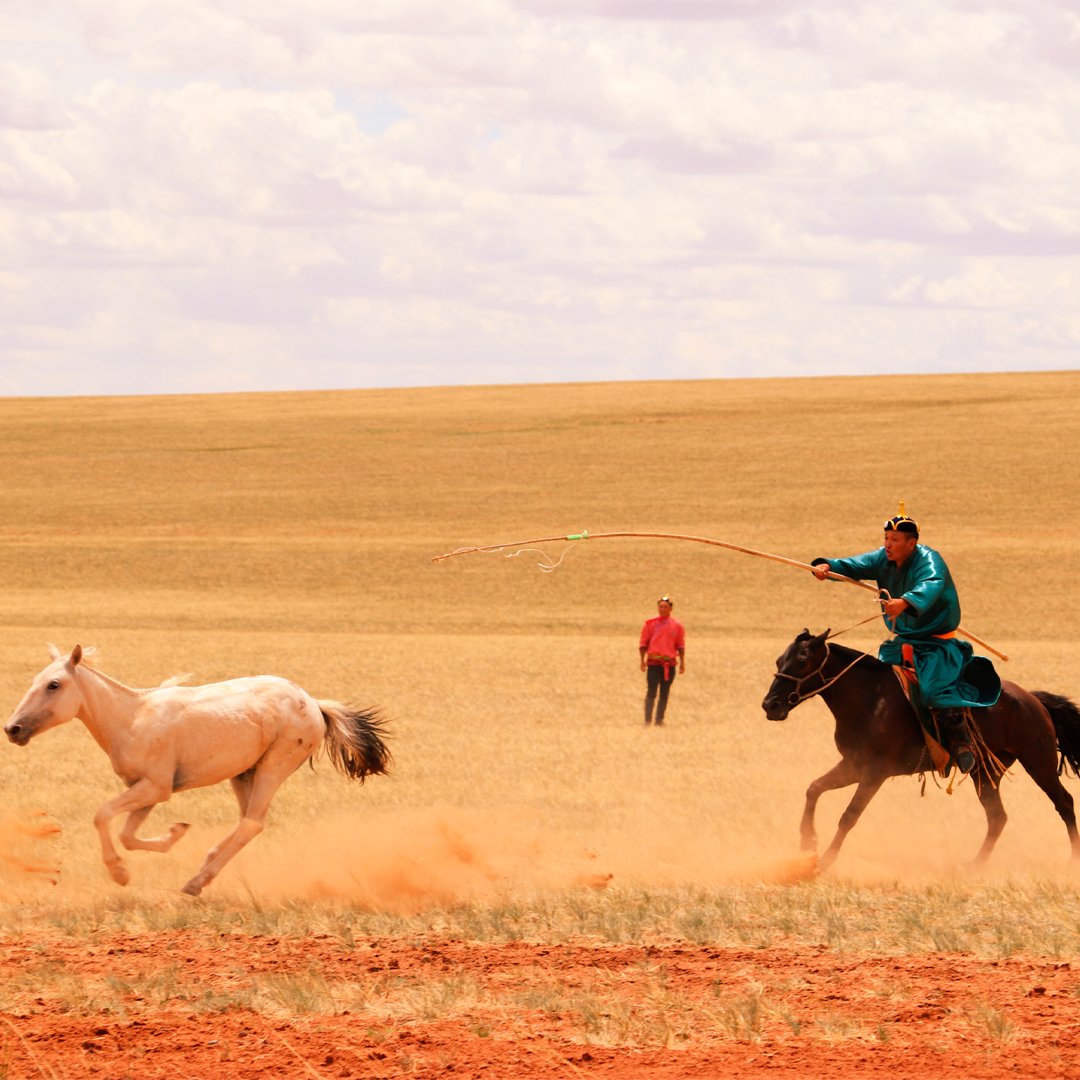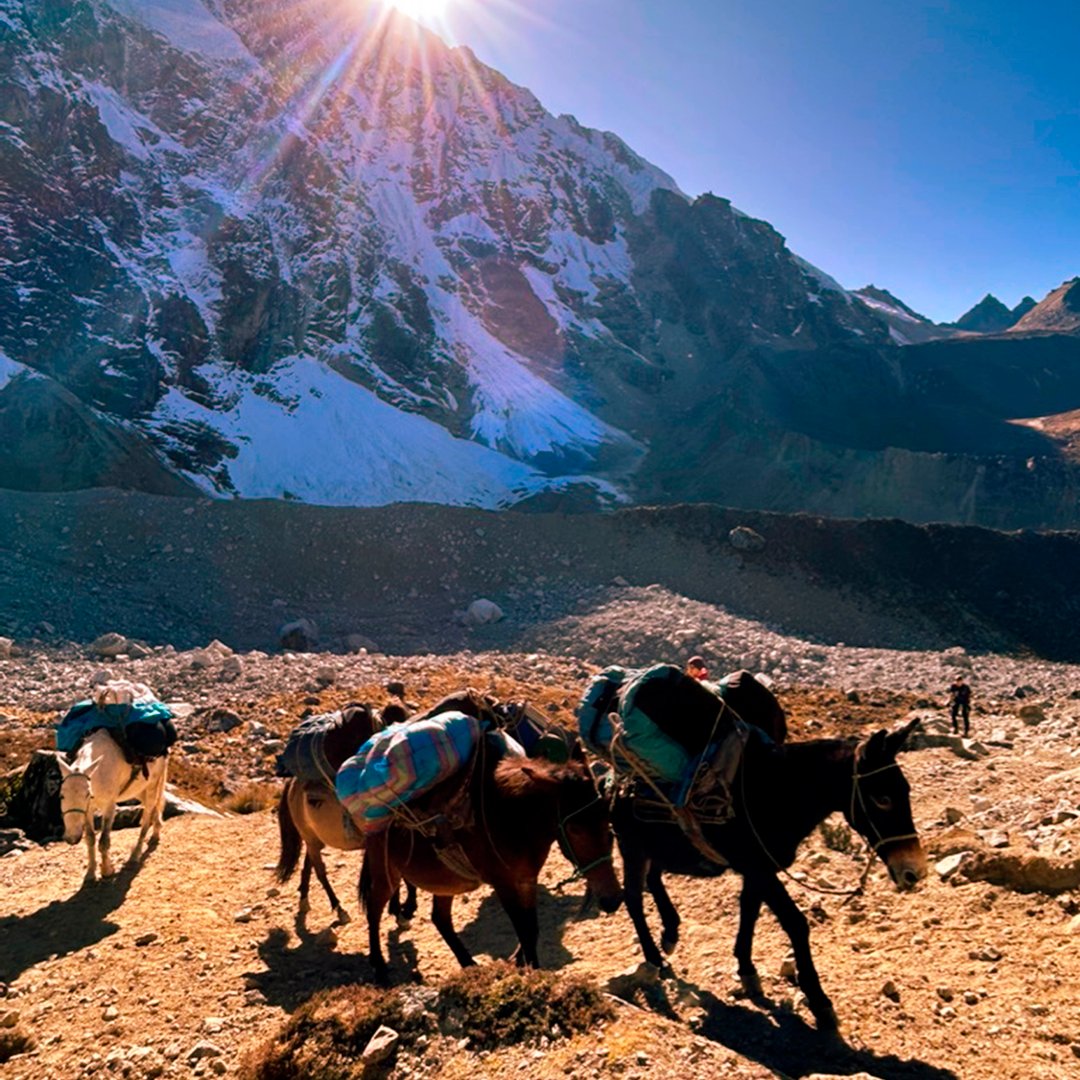All domestic horses living on the planet today, be they racehorses, ponies or heavyweight giants, appeared at the end of the 3rd millennium BC from the southern Russian steppes. However, the exact time of the domestication of modern horses and their widespread distribution among the ancient populations of Eurasia remains the subject of heated debate.


A new study published in the journal Nature on 06.06.2024 claims that the spread of modern domestic horses began around 4,200 years ago. This date marks the beginning of a new era in human history, when horses greatly accelerated the development of communication links on the Eurasian continent, becoming a catalyst for the beginning of unprecedented exchange and interaction between different cultures. The work was coordinated by Ludovic Orlando, director of the Centre for Anthropobiology and Genomics of Toulouse (Paul Sabatier University), and involved 133 researchers from 113 institutions around the world, including Toraighyrov University and several other Kazakh universities. The research team collected an extensive collection of archaeological finds of horses from across the Eurasian continent. The study combined the results of radiocarbon dating and ancient DNA sequencing to date the genome sequences and to examine in detail the onset of genetic transformations that coincide with the emergence of horse breeding.
— I started working with horses about ten years ago. At that time, we only had a few ancient genomes. Thanks to this work, we now have several hundred. It was particularly important to obtain data from Central Europe, the Carpathians and Transylvania, as this area has been central to the ongoing debate about the origins of horse riding, which led to the start of mass migrations from the steppes around 5,000 years ago, and possibly earlier, said Pablo Librado, the study's first author and now a staff researcher at the Institute of Evolutionary Biology of Barcelona, a joint center between CSIC and Pompeu Fabra University.
The research team carefully examined the data on three measures of horse breeding. First, they traced when the ancestors of modern horses began to spread beyond the region of domestication. They then reconstructed horse demography throughout the third millennium BCE to pinpoint the exact time of the earliest signs of domestication and the start of large-scale horse breeding. They found evidence of significant changes in the reproductive lifespan of horses, indicating deliberate manipulation of reproduction by early breeders. All three lines of evidence converge at a time around 4,200 years ago, suggesting that domestic horses began to be bred in large enough numbers to support growing demand on the continent. Thus, 4,200 years ago, intensive horse travel as we know it began. The horse, as the backbone of travel, remained the fastest form of land transport until the advent of mechanical propulsion in the 20th century.
However, ancient DNA studies have revealed earlier changes in the European genetic landscape, occurring in the first half of the third millennium BCE, following a massive expansion of people from the steppes thought to be the speakers of the Proto-Indo-European language. Because the genetic map of horses began to change much later, the research team does not believe horsemanship was the driving force behind the success of these migrations, despite the fact that horse-related terminology forms the common basis for most Indo-European languages.
— One question that has puzzled me for years concerns the scale of production: how could such a large number of horses be suddenly bred from a relatively small area of domestication to meet an increasingly global demand at the turn of the second millennium BCE? Now we have an answer. Breeders controlled the reproduction of the animals so well that they almost halved the time interval between two generations. In simple terms, they were able to speed up the reproduction process, effectively doubling productivity, added Ludovic Orlando.
The methodology developed in this study for measuring generation times is new and harnesses the full potential of ancient genome time series. As genomes evolve, they accumulate mutations and recombine each generation. The number of mutations they carry and the DNA crosstalk events they have undergone provide a direct measure of the number of generations leading up to them. When combined with radiocarbon dating, the number of generations can be converted into calendar years. The research team found that more generations have accumulated over the last two centuries, coinciding with the emergence of many modern pedigrees as a result of intensive selective breeding. Strikingly, the generation clock was found to be running faster around 4,200 years ago, just as domesticated horses began to be mass produced and spread geographically.
“Our methodology for measuring temporal changes within a generation has great potential. It “equips” the archaeozoological toolkit with a new way to monitor the development of controlled breeding of various domestic species along with horses. But it can also help shed light on the life span of one generation in ancient populations or animals and how these intervals evolved together with changes in lifestyle or significant climate changes,” adds Pablo Librado, who developed the statistical framework.
Regarding horses, it should be noted that the research group has established the existence of an exceptionally short interval between generations within the development line of horses of the modern type. What significantly distinguishes them is the horses studied at the settlements of Botai (where facts of horse milking, harnessing and corrals were recorded) and Borly 4 in Central Asia. Since the genetic composition of Botai-type horses remained local and did not spread throughout Eurasia, it can be said that the “Botai” did not undertake extensive long-distance migrations.
“Our data confirms two domestications of horses. The first occurred about 5,500 years ago in Northern Kazakhstan. The goal of this process was to solve the problem of declining horse numbers and provide food for the populations inhabiting the steppes of Central Asia. The domestic horse, as we know it, arose about 4,200 years ago as a result of second domestication. This event truly changed the history of mankind, providing rapid mobility for the first time,” concluded Ludovic Orlando.
This work was mainly supported by the European Research Council (CoG PEGASUS and SyG Horsepower).
“The results obtained significantly complement the overall picture of the domestication of modern horses and make it possible to determine the factors that influenced the beginning of global migrations in the steppe belt of Eurasia in the Late Bronze Age. The territory of Pavlodar Irtysh region and Northern Kazakhstan was an integral part of the processes taking place at that time, the population of which actively participated in them. The materials obtained by the expedition of Toraighyrov University from the settlement of Borly 4 (Lebyazhinsky district of Pavlodar region) supplemented the results of the study of the Botai settlement, allowing us to reasonably identify the Botai type of domesticated horse in the second half of the 4th millennium BC, but its fate remains unclear so far in the 3rd millennium BC Were they immediately abandoned or were they used by the local population in the Asian steppes for some time? Targeted research of the Chalcolithic and Early Bronze Age monuments of Kazakhstan, which is carried out by our university, will allow us to answer these questions. In the meantime, the two recorded lines of development of horses - Botai and Ponto-Caspian - clearly indicate two eras - the Chalcolithic and the Late Bronze Age.” This year, research on all these issues will be continued by our expedition with foreign colleagues from the universities of Exeter, Kiel and others, said Viktor and Ilya Mertz, members of the research team from the Joint Archaeological Research Center named after. A. Kh. Margulan from Toraighyrov University (Pavlodar).
Photo 1: Mounted shepherd catches a horse in Inner Mongolia, China, July 2019. ©️ Ludovic Orlando.
Photo 2: Horse and mule trains carrying heavy loads across the Peruvian Andes, in the Salkantay Mountains, August 2024. ©️ Ludovic Orlando.
--
С уважением,
Ксения Селезнева






